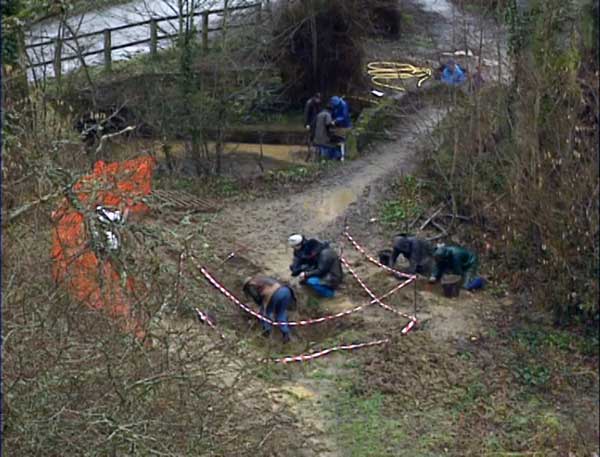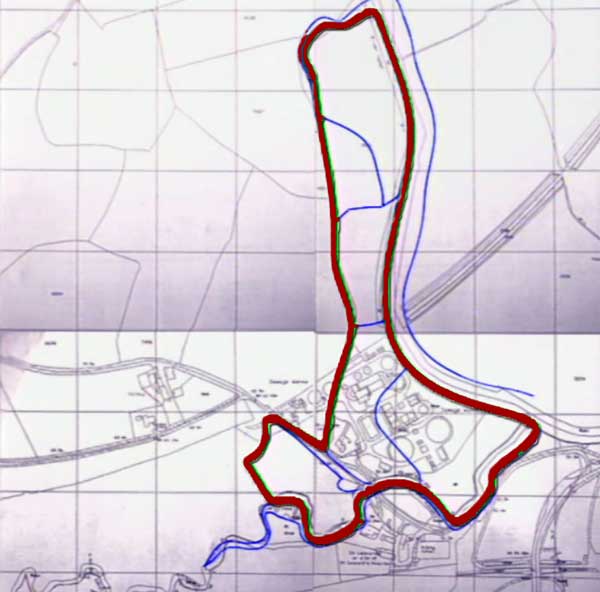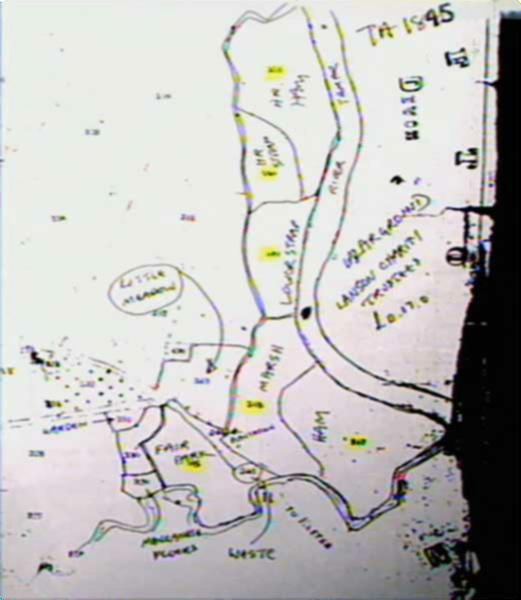.


It was about the year 1250 that the hospital for lepers, dedicated to St. Leonard, was founded at Gilmartin. It had previously existed in Launceston itself having been provided in a charter of Earl Richard that the bailiffs of Launceston should answer the farm of the borough by paying a hundred shillings to himself, sixty-five shillings and ten-pence to the Priory, and a further hundred shillings to the lepers of “St. Leonard of Lanston.” A charter that was still among the records of the borough at the end of the nineteenth century, grants hospital and chapel to “the leprous of Gillemartin” by the Convent of “Lancenetone” with Prior Robert as its head. It is attested by Earl Richard, by the then Bishop of Exeter, the Archdeacon of Cornwall, the seneschal of the county, and others, including Hamelin Miles, Mayor of the borough, and Oliver Corc and John the Dyer, “preposto” – alderman, reeves, or magistrates. In this charter several local names may be noted, both of places and persons, which remain to us even now: the Kensey appears in it as! Agua de Kensi,” the Tamar as “fluviunm Tambia,” the hospital being situated close to the point where the Kensey flows into the Tamar; and among the signatures were a Hornicote and a Trelose (Trelaske), a Bottreaux (Bottrell) and a Wise.
Leprosy was so prevalent in the middle ages and was probably brought to this country from the East by the Crusaders and then fostered by the too extensive fish diet then popular, it appears that Cornwall was especially afflicted with the disease. There was a lazar-house of St. Mary Magdalene at Liskeard, but this does not seem to have been either as old or important as those of St. Leonard at Launceston and St. Lawrence at Bodmin. The account of St. Lawrence, Hals wrote, “in this parish stands a lawres hospital, that is to say, a hospital for lepers (loure or lower in British is a leper), which hath good endowment of lands and revenues appertaining thereto, founded by the piety and charity of the well-disposed people of this country in former ages, for the relief, support, and maintenance of all such people as should be visited with that sickness called elphanteasy, in Latin lepra or elphnatia, in English leprosy, in British lowery; being a white infectious scurf running all over the bodies of such persons as are tainted therewith. The custom of the place was such, that none were to be admitted by the governors of the same for the time being unless the person so brought in paid them 3d. a pot for dressing their meat, a purse and a penny in it to receive alms.” There is little proof that the hospital at Launceston was formed along the same lines, however, the evidence of Earl Richard giving one hundred shillings yearly to the lepers of St. Leonards, expressly declares the sum to be granted “out of our alms,” does back up that it was.
The hospital remained in existence for nearly four hundred years but its activities as an institution disappear at the beginning of the seventeenth century. In the return of Edward the sixth’s Commissioners certain lands in the parish of St. Stephens are stated to be devoted to the payment of ‘ a priest to minister in a spittle house there,’ and there has been noted an extract from the Parish Register to show that just at this time the ‘almes house’ still contained inmates, while in 1607 there was equally tangible proof of existence in the shape of a receipt given by the Prior of St, Leonards (a title which appears curious half a century after the full accomplishment of the Reformation) to the Mayor of Launceston for the hundred shillings which Earl Richard had nearly four hundred years before had directed the Corporation to pay to the lepers. “Be it known vnto all men by these psents,” runs the receipt, “that I degory Band Prior of the hospital pr Lazer howse of Saaynt Leonardes als Gylmartyn with the rest of my Bretheren and Systers doe acknowledge our selues to haue receaued of Mr. Arthur Piper (possibly the son of Sampson Pyper) Mayor of the Borough of Dunheved, als Launceston the whole and Intire some of vli. (five pounds) of lawful mony of England due vnto vs at the ffeast of Saynt Michaell tharcaungle now last being the kings maties ffree gift to wardes the aforesaid hospitall of Saynt Leonardes als Gylmartyn wherefor I the sayd degory Band with the rest of my bretheren and Systers fo acknowledge our selues to be thereof Satisfied Contented and payd and we haue caused this our acquitance to be made and haue here vnto fixed our Common Seale of the said howse the tenth day of October in the Raigne of our Souereigne Lord James By the grace of god of England ffrance and Ireland King defender of the ffayth &c. the ffiveth and of Scotland the one and ffortith 1607.”
From this date there was little evidence of any further activity at St. Leonards, a name that was given to more than one Lazar-house in the country: as early as the reign of John there is mention of a St. Leonard’s hospital for lepers at Bedford and also at Northampton, and in the Chancery records of Elizabeth there is a reference to a ‘dissolved hospital of St. Leonard in Newport Pond,” Essex. The ordinary historian of such institutions has devoted so little attention to the one at Gilmartin that it has even, by a stroke of extraordinary fatuity, been described as if it were three. As previously mentioned, its first description was by the name ‘Gild Martyn,’ and then it is noted as a hospital at Launceston, dedicated to St. Leonard; and finally a hospital at Newport, dedicated to St. Thomas, “which was well endowed and governed in Mr Carew’s time.” Part of this confusion is to be attributed to the diverse names under which the institution went; part also has undoubtedly arisen from the disappearance of the hospital by the absorption of its revenues into those of the then Launceston Corporation. From this time the institution mysteriously vanishes from the records, building and lepers as well. The name of the premises which has been built upon the former hospital’s site is really all that remains, plus the record in gilded letters on the front of St. Mary Magdalene’s gallery touching “St. Leonard’s Hospital Lands, fields called the Lazar Ground, lying in the parish of St. Stephens by Launceston, containing 17 acres, now (1840) rented by W. Mitchell at twenty pounds per annum. Belong to the poor of this parish and of the ancient Borough of Dunheved.” Income was still being derived from the old Lazar Ground well into the nineteenth century.
St. Thomas Church has a lepers window called ‘the leper’s squint.’ at the base of the tower, which is a small aperture with a heavy iron grille across it at which, it is thought, patients from St. Leonards, who were not allowed in the building, would observe the service taking place. It is also believed that gifts of bread were left beneath the window for the lepers.
In September 1995, workmen undertaking a drainage scheme discovered several skeletons which were believed to date from the Civil War period. They were later interred in St. Thomas Churchyard. The site was later excavated by the Channel Four Time Team, headed by Tony Robinson (below).




Visits: 442

